The Tuscan Style, with its plain form and the absence of carvings or ornaments, is one of the simplest architectural form developed in ancient Italy.
The Origins
The Tuscan order is a classical order born in Rome that is solid, yet simple. The influence of the Doric order is evident, even if it features unfluted columns and has no triglyphs or guttae. The Romans did not see this style as a separate order, thus Vitruvius does not mention it in his manuscript “De architectura”.
It was first classified as a separate formal order during the Italian Renaissance.
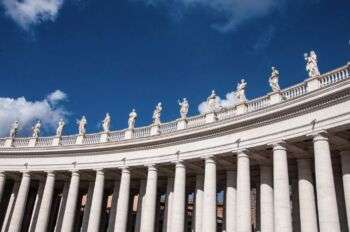
Image source: https://search.creativecommons.org/photos/d36a6f28-2af9-441a-ba0d-da8076b60a91 by Sarah&Boston
The Tuscan Order is seen, because of its simplicity and proportions, as a Roman adaptation of the Doric. This solid order was used in military architecture, such as docks and warehouses, when they were dignified by architectural treatment. It is suitable for fortified places, such as city gates and other structures used in war.
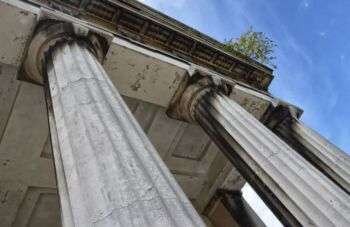
Image source: https://search.creativecommons.org/photos/4a522744-16e9-4e4a-a3e4-8692e446285f by It’s No Game
Differences Between Doric and Tuscan Order
The Tuscan order, when compared to the classical Doric order, has less severe elements. It is likely that the Romans invented this order. For example, at the base of the column there is the presence of a molding just below the capital, and the stem of the column is often smooth, without grooves.
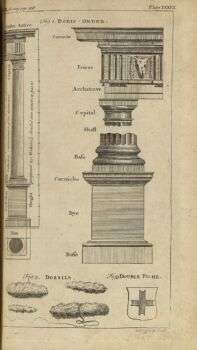
Image source: https://search.creativecommons.org/photos/871a5d99-a223-4c7e-8a23-106bbb449944 by Biblioteca Rector Machado y Nuñez
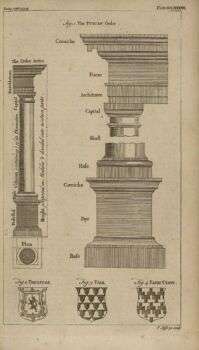
Image source: https://search.creativecommons.org/photos/fbbb5b88-436c-4c19-9f09-802bfc6903ce by Biblioteca Rector Machado y Nuñez
The Tuscan Column is a Roman adaptation of the Doric. It has an unfluted shaft and a simple echinus-abacus capital. It is similar to the Roman Doric in proportion and profile, but it is much plainer. The column is seven diameters high. Among all orders, it is the most solid in appearance.
Style Features
This style has the following features:
- Shaft sets on a simple base, is usually plain, not fluted (grooved)
- Shaft is slender, with proportions similar to a Greek Ionic column
- Smooth, round capitals (tops)
- No carvings or other ornaments
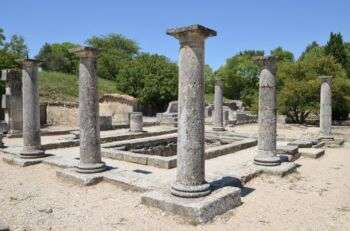
Image source: https://search.creativecommons.org/photos/279cb87b-ef98-4379-a037-88a015dd83f8 by Following Hadrian
The Tuscan Order Today
There are many important examples of Tuscan Order found today:
- Santa Maria della Pace (Pietro da Cortona, 1656) in Rome.
- Palazzo Massimo alle Colonne (Baldassarre Peruzzi) in Rome.
- Various buildings in Europe that reach up to the late nineteenth century.
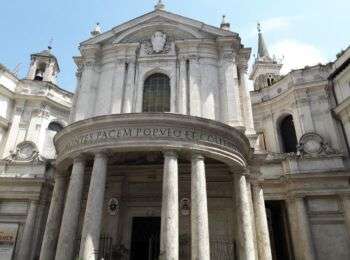
Image source: https://search.creativecommons.org/photos/14f90540-246d-4a45-8f25-9909e4255fa9 by Pjposullivan1
We can also find several examples in England:
- Covent Garden by Inigo Jones (1633) in St Paul’s.
- West Wycombe Park.
- The Palladian house of Wentworth Woodhouse in Yorkshire.
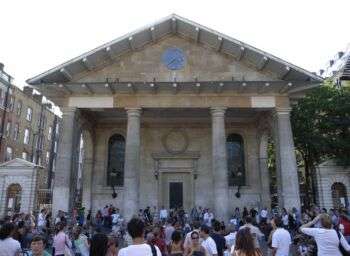
Image source: https://search.creativecommons.org/photos/95bd8536-736b-4b79-bdd0-4ae4006b2683 by stevecadman
Info source:
http://www.essential-humanities.net/search/index.htm?q=tuscan+order
http://architecture.about.com/od/buildingparts/g/tuscan-column.htm
